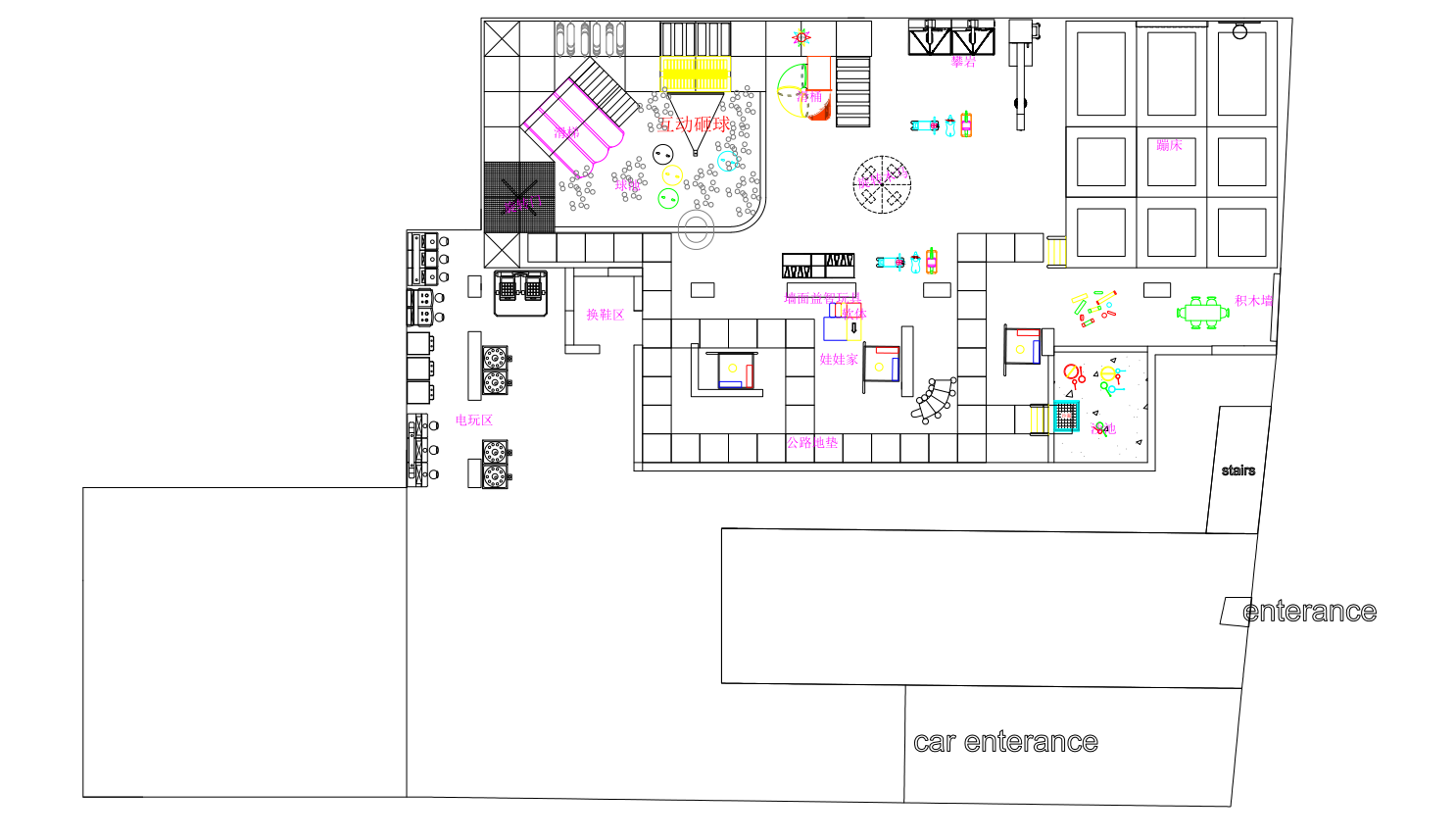Please contact us!
互动砸球 (Interactive Ball Throw): Enhances hand-eye coordination and reaction time by allowing children to throw balls interactively.
沙漏 (Hourglass): A large hourglass device for children to observe the flow of sand, teaching patience and the concept of time.
狼牙棒 (Mace): A hanging or swinging device that helps children improve their balance and coordination.
旋转门 (Revolving Door): Adds fun and challenge with a rotating door or passage.
旋转木马 (Carousel): A classic ride offering enjoyable spinning experiences for children.
积木墙 (Building Block Wall): Allows children to build and create with large blocks, fostering creativity and motor skills.
沙池 (Sand Pit): A sand-filled area for children to play and build sand structures, enhancing tactile experiences.
公路地垫 (Road Mat): A mat simulating roads for children to play on, learning traffic rules and safety.
娃娃家 (Dollhouse): A play area simulating a home environment for role-playing, developing social skills and imagination.
软体 (Soft Play): Soft toys and facilities providing a safe play environment, preventing injuries.
墙面益智玩具 (Wall-mounted Educational Toys): Educational toys mounted on walls for problem-solving and intellectual development.
球池 (Ball Pit): A pit filled with colorful balls for jumping and playing, enhancing tactile experiences and full-body coordination.
滑梯 (Slide): Classic slides for children to slide down, providing fun and excitement.
滑桶 (Slide Tube): Enclosed slides offering more challenge and fun during sliding.
攀岩 (Rock Climbing): Small climbing walls for children to climb, improving strength and balance.
蹦床 (Trampoline): Elastic surfaces for children to jump and play, enhancing flexibility and coordination.
换鞋区 (Shoe Change Area): Areas for parents and children to change shoes, maintaining cleanliness and safety in the playground.
电玩区 (Arcade Area): Areas providing video games and entertainment devices for children and parents to enjoy.
![]() 70e11f29505542ca912682b11b58ace8.pdf
70e11f29505542ca912682b11b58ace8.pdf

Establishing an indoor playground serves multiple purposes:
Providing a Safe Play Environment: Ensures children have a secure place to play, especially during unsuitable weather for outdoor activities.
Promoting Child Development: Various facilities help develop physical, intellectual, and social skills.
Facilitating Social Interaction: Allows children to interact and make friends, learning sharing, cooperation, and communication skills.
Meeting Parental Needs: Offers a safe and fun place for children to expend energy while parents relax or participate.
Creating Business Opportunities: Presents a profitable business model with potential for stable customer flow and revenue.
Combining Education and Entertainment: Many facilities integrate educational elements, allowing children to learn while having fun.
Fulfilling Community Needs: Provides a social and entertainment venue, enhancing community cohesion.
Determining the best time to establish an indoor playground involves considering market demand, financial readiness, seasonal factors, planning, marketing, and long-term sustainability.
Market Research and Demand Analysis
Conduct thorough market research to understand demand and competition.
Identify market gaps and assess competition to determine the right entry point.
Financial Preparedness
Ensure adequate funding for leasing, equipment purchase, staffing, and initial operations.
Utilize financing or investment opportunities if available.
Seasonal and Climate Factors
Consider opening during winter or rainy seasons when indoor activities are in higher demand.
Plan to open before school holidays or major festive seasons to attract more families and children.
Planning and Preparation
Account for the time required for construction and renovation, typically 3-6 months.
Plan equipment procurement and installation, leaving room for potential delays.
Marketing and Promotion
Start marketing and promotional activities 3-6 months before opening.
Engage with potential customers and generate interest through early promotion.
Long-term Planning
Align opening time with high demand periods for quick customer base and revenue growth.
Develop sustainable long-term plans to maintain customer interest and engagement.
By considering these factors and strategically planning your opening, you can maximize the success and profitability of your indoor playground.
Quick Links:
Trampoline parkChildern Indoor Play AreaChildren Indoor PlaygroundIndoor Play SructuresIndoor Playground EquipmentIndoor Playground SupplierKids Indoor PlaygroundIndoor Playground FactoryCopyright Wenzhou Dream Garden Amusement Equipment Co.,Ltd | Sitemaps|Xml
| Privacy Policy|
Please contact us!

